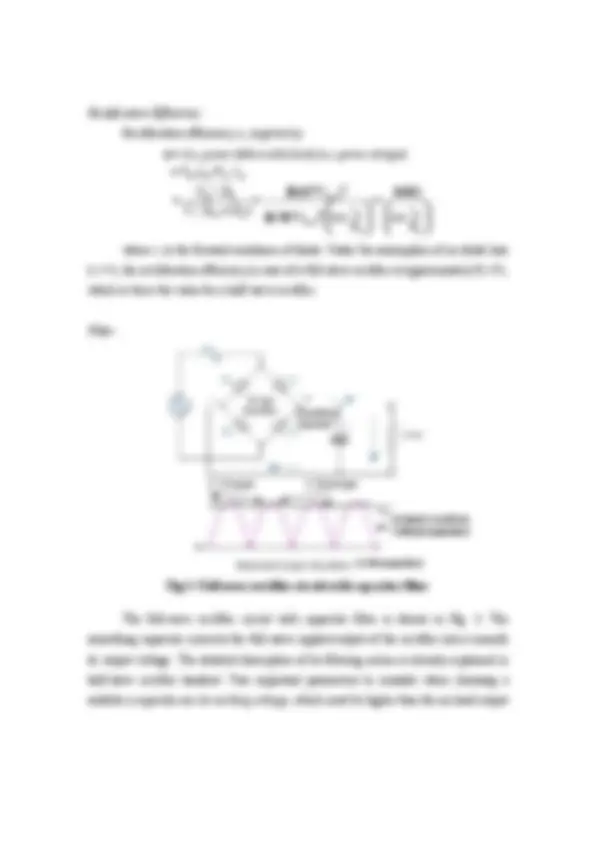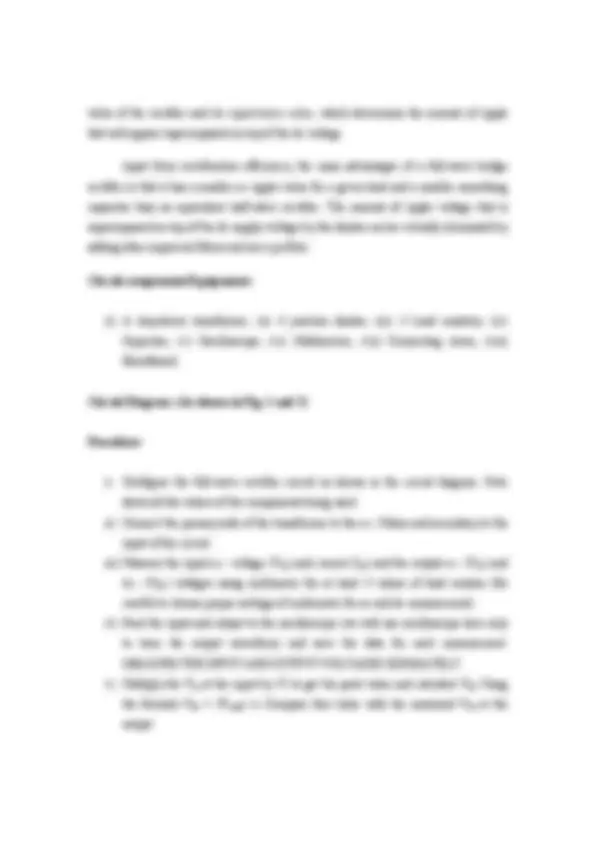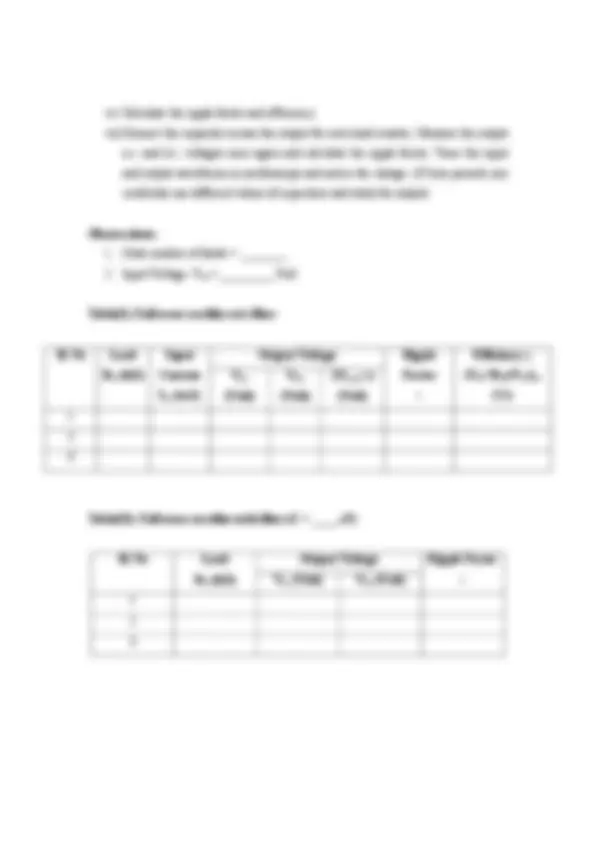





Study with the several resources on Docsity

Earn points by helping other students or get them with a premium plan


Prepare for your exams
Study with the several resources on Docsity

Earn points to download
Earn points by helping other students or get them with a premium plan
Community
Ask the community for help and clear up your study doubts
Discover the best universities in your country according to Docsity users
Free resources
Download our free guides on studying techniques, anxiety management strategies, and thesis advice from Docsity tutors
To construct a full-wave bridge rectifier circuit and analyze its output. 2. To analyze the rectifier output using a capacitor in shunt as a filter. Overview:.
Typology: Study notes
1 / 6

This page cannot be seen from the preview
Don't miss anything!




Objectives:
series while diodes D3 and D4 are reverse biased and the current flows through the load as shown below (Fig. 2). During the negative half cycle of the supply, diodes D3 and D conduct in series, but diodes D1 and D2 switch of as they are now reverse biased. The current flowing through the load is the same direction as before. Fig. 2: Working of Full-wave bridge rectifier As the current flowing through the load is unidirectional, so the voltage developed across the load is also unidirectional during both the half cycles. Thus, the average dc output voltage across the load resistor is double that of a half-wave rectifier circuit, assuming no losses. max V^2 V^ max^0. 637 V dc Ripple factor: As mentioned in the previous lab the ripple factor is a measure of purity of the d.c. output of a rectifier and is defined as 1 0. 48
2 2 2 2 2 2
dc rms dc rms dc dc ac V
V output V output r In case of a full-wave rectifier Vrms = Vmax/√2 = 0.707Vmax. The ripple frequency is now twice the supply frequency (e.g. 100Hz for a 50Hz supply).
value of the rectifier and its capacitance value, which determines the amount of ripple that will appear superimposed on top of the dc voltage. Apart from rectification efficiency, the main advantages of a full-wave bridge rectifier is that it has a smaller ac ripple value for a given load and a smaller smoothing capacitor than an equivalent half-wave rectifier. The amount of ripple voltage that is superimposed on top of the dc supply voltage by the diodes can be virtually eliminated by adding other improved filters such as a pi-filter. Circuit components/Equipments: (i) A step-down transformer, (ii) 4 junction diodes, (iii) 3 Load resistors, (iv) Capacitor, (v) Oscilloscope, (vi) Multimeters, (vii) Connecting wires, (viii) Breadboard. Circuit Diagram: (As shown in Fig. 1 and 3) Procedure: i) Configure the full-wave rectifier circuit as shown in the circuit diagram. Note down all the values of the components being used. ii) Connect the primary side of the transformer to the a.c. Mains and secondary to the input of the circuit. iii) Measure the input a.c. voltage (Vac) and current (Iac) and the output a.c. (Vac) and d.c. (Vdc) voltages using multimeter for at least 3 values of load resistor (Be careful to choose proper settings of multimeter for ac and dc measurement). iv) Feed the input and output to the oscilloscope (we will use oscilloscope here only to trace the output waveform) and save the data for each measurement. MEASURE THE INPUT AND OUTPUT VOLTAGES SEPARATELY. v) Multiply the Vac at the input by √2 to get the peak value and calculate Vdc Using the formula Vdc = 2Vmax/ π. Compare this value with the measured Vdc at the output.
vi) Calculate the ripple factor and efficiency. vii) Connect the capacitor across the output for each load resistor. Measure the output a.c. and d.c. voltages once again and calculate the ripple factor. Trace the input and output waveforms in oscilloscope and notice the change. (If time permits you could also use different values of capacitors and study the output) Observations: